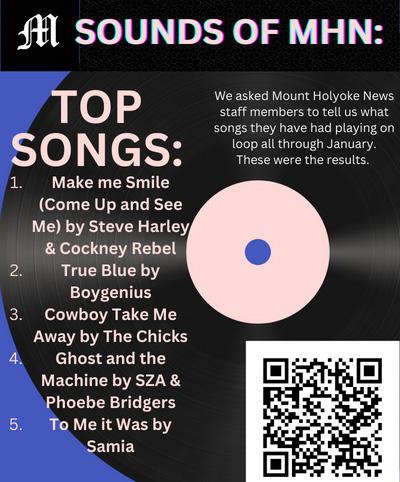
2 minute read
Menu’ is a satirical take on the folly of the wealthy
BY ELIŠKA JACOB ’24 ARTS & ENTERTAINMENT EDITOR

The epithet “if looks could kill, I’d be dead right now” may well apply to an analysis of “The Menu” — just replace “looks” with “a sixcourse meal.” Released in theaters on Nov. 18, 2022, and streaming platforms on Jan. 3, 2023, “The Menu” is a dark, satirical horror-comedy that reveals the exploitative nature of the wealthy through various scenes that demonstrate the pretentiousness with which the rich characters carry themselves, especially when interacting with service workers.
Margot (Anya Taylor-Joy) agrees to attend a prestigious dinner headed by the renowned Chef Slowik (Ralph Fiennes) on a remote island with her partner Tyler (Nicholas Hoult). The exclusive full-course meal caters to a small group of affluent individuals, a demographic Margot does not fit into. As the night progresses, the diners realize that this meal is not what they expected, as the image of what Chef Slowik created for his customers begins to manifest into a dark, queasy reality.
The film has drummed up opinions about its brilliance, or lack thereof, with The New York Times’ Jeannette Catsoulis defining it as a “brutal satire of class division — viewed through the lens of high-end gorging — [that] is ruthlessly focused and gleamingly efficient.”
Bon Appétit’s Serena Dai noted, “While most of the movie feels tailor-made for people who closely watch the fine dining world, the ending did make me roll my eyes. … It reminded me how many horror films struggle to stick their landings.” To gain an understanding of other perspectives on this film, Mount Holyoke News reached out to the College community to hear their thoughts.
“I fucking loved this movie,” began Gabby Rondinelli ’24. “My mom and sister went to go see it in theaters without me, but we watched it together when they put it on HBO Max.” Jean Klurfield ’24 also had a similar viewing experience: “My mom sat me down and said it was hilarious, so I watched it with her. … I really liked it.”
Focusing on the movie’s overall theme, Klurfield explains, “I think sometimes we get this anti-wealthy rhetoric without the real follow-through, without real punishment to the extent I would like. I was actually finding myself rooting for the so-called villain, the chef. He is, of course, terrible, but if he didn’t end up killing those rich assholes, I’d have been very upset.”
As the audience learned more about Chef Slowik’s backstory, sym- pathy began to manifest. His tumultuous childhood carried by his abusive father may explain his desire to enact vengeance unto those that have perpetuated wrongdoings.
The wealthy diners are characterized by these wrongdoings: a married man who solicits sex work, a pair of pompous tech bros who had been falsifying bills to their customers to make more money and a Slowik fanboy who treats his partner as if she were a child.
These characters, while perhaps not deserving death as a consequence of their actions, embody the sort of elitism and self-righteousness that Chef Slowick despises and sees as a fatal vice.
Rondinelli also echoed support for Chef Slowik. “So sad and tragic and captivating how an artist [Chef Slowik] was drawn to something so insane to get back at the type of people who literally killed his will to create for pleasure,” she began. “I read somewhere that there was originally a scene that explained how the journalist [one of the diners] exposed [Chef Slowik’s] name while he was operating under anonymity, and that








